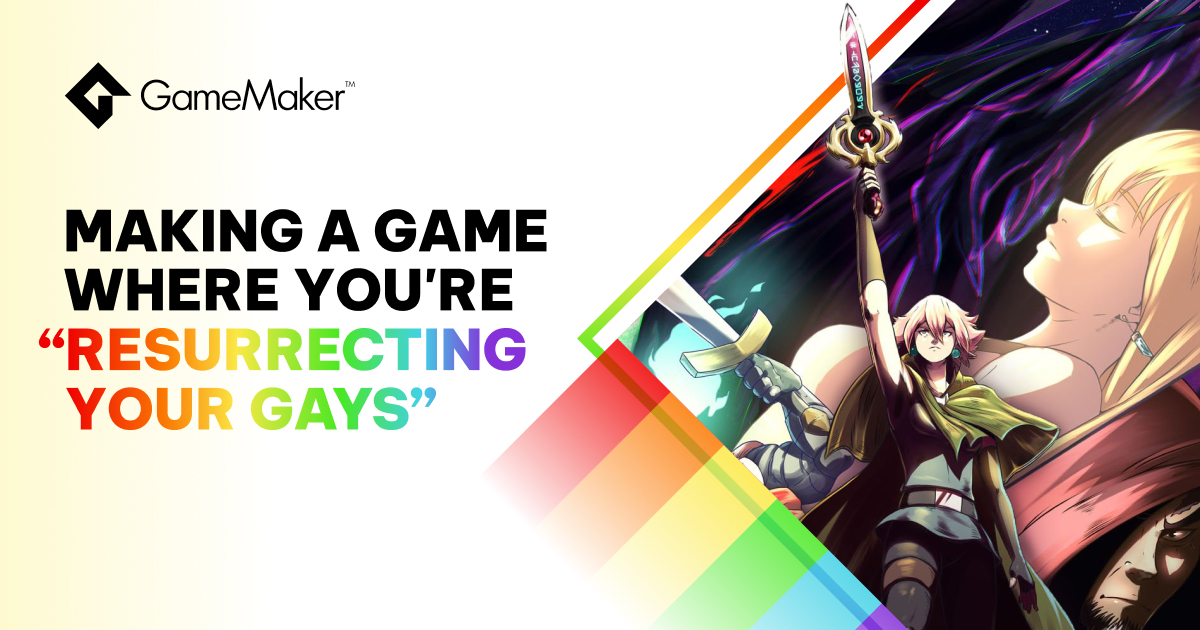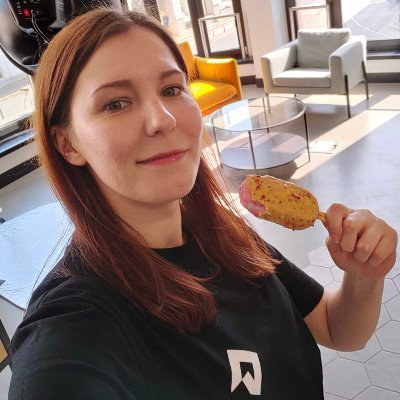Grimorio of Games are an independent studio from Barcelona, Spain, and the creators of the dungeon-crawling action RPG Sword of The Necromancer, where the fallen enemies fight alongside you!
During our interview, we discussed their upcoming games, how mechanics inspired the story of their game and the way Sword of the Necromancer subverts the “bury your gays” trope.
What are the beginnings of your studio?
We started as a two-person team, formed by two friends since high school. We've grown with each project until we reached our current state, from the original two, to six people with our second project and ten with our current one.
What games have you worked on?
Our first game was Super Hyperactive Ninja, which we started developing with the first Game Maker Studio before jumping to GMS2 for the console port.
We wanted to make a simple game as our first before going with deeper themes and mechanics, so we made a simple platformer about Ninjas who had to pick coffee constantly or they'd fall asleep, something everyone would feel related to.
With the benefits from that game's sales we could start working on Sword of the Necromancer and have a game with actual storytelling.
What are you working on right now?
We are working on Sword of the Necromancer: Revenant, a sequel to Sword of the Necromancer. Revenant takes the original Sword of the Necromancer as a base and expands on everything.
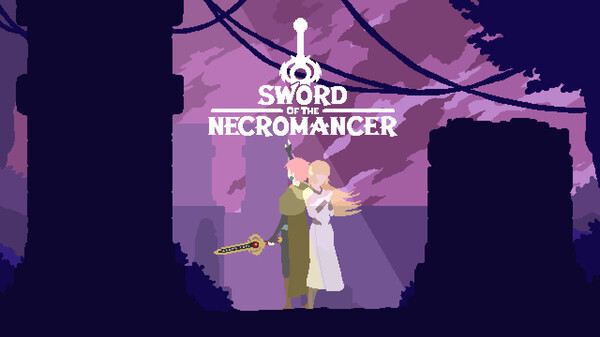
Title screen of the game
Now we have cities, open fields, different dungeons you can explore, and even a City Builder aspect inspired by games like Dark Cloud/Dark Chronicle where you can recruit a diverse cast of characters to reconstruct your town.
What inspired Sword of the Necromancer?
One day when talking about games from our childhood with a friend, we started talking about Azure Dreams, a Konami game for the original PlayStation. We loved the idea of using the monsters you encountered in the dungeon and thought we could give it a spin by making the combat real-time and streamlining the monster-catching process, where instead of having to wait for an egg to hatch, you’d use the monster directly.
Battling and monster summoning were the two main ideas, and to do that we needed something that would allow the player to kill monsters and then resurrect them. That's how the Sword of the Necromancer was born.
Did your story develop from the mechanics? Or was it the other way around?
From that mechanic came the story: who would use such a tool for good? Maybe someone who lost a loved one and wanted to bring them back with that "forbidden" power. We decided from the start that the two main characters would be women, and we'd go for the classic "princess/knight" trope but with our own touch.
Instead of a princess, we'd have a priestess and instead of a (male) knight, we'd have a female rogue that reluctantly serves as the priestess's bodyguard until her demise.
How does your game explore the themes of being queer?
The game's main story is told through flashbacks, telling the story of Koko and Tama, a priestess and her bodyguard who have to go on pilgrimage around the continent. Throughout the game, players get a glimpse of how they met, start learning and depending on each other and eventually fall in love. During that travel, Koko dies, and that's where the game actually starts, with Tama going into the depths of the Necromancer's Crypt to try to defy the "natural order" (the status quo) and do whatever it takes to be with the woman she loves.
It's a story everyone can relate to and we made it about two women who love each other because why couldn't we? Narratively, we feel that them both being women allows the story to draw more direct parallelisms: both women reject the roles they were meant to perform: one is a priestess that wants to take an active part in helping people, the other is a rogue who has had a hard life and wants a way out. Both also rebel against a father figure in their own ways.
Lastly, we wanted to subvert the "bury your gays" trope, or the "Dead Lesbian Syndrome" by making a game where you're "resurrecting your gays".
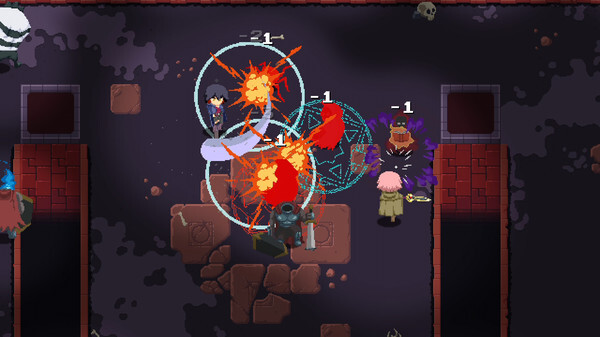
Help Tama fight for her love!
Is game development a friendly space to the LGBT+ community?
We'd say that the indie development community mostly is, at least in our country. Outside of indies, that's another whole world.
Are there any unique challenges that LGBT+ developers and their games face?
There is one thing that really grinds our gears: that many gamers think of games with LGBT representation as propaganda or part of an "agenda" instead of an actual, genuine and sincere work. We even got backslash with Sword of the Necromancer for not stating clearly that the main characters were women in love, and were accused of being "sneaky" and slipping these themes in the game in a treacherous way or something.
We don't feel we had to announce it with neon signs, the same way a game with a straight couple doesn't need to state that if features a straight couple. It's not like we hid it either, we just made a game that happened to feature a same-sex couple in a completely natural way.
Who are your favorite LGBT+ developers and/or games?
Deconstructeam is the first that comes to mind, with awesome games like The Red Strings Club. Also Maxi Molina (SandraMJDev), sole developer of The Hayseed Knight (a visual novel with great worldbuilding and a queer polycule at its center), who was the voice director for Sword of the Necromancer.
Why did you choose to work with GameMaker?
We feel that Game Maker is the best option for 2D games. It's simple yet powerful and allows to make games quickly. Even if we are currently working on Sword of the Necromancer: Revenant, which uses Unreal Engine 5, we still develop side projects with Game Maker, because it allows for rapid development - for example, Whispike Survivors. It’s a spin-off based on a popular monster from Sword of the Necromancer.
It blends Vampire Survivor with a farming game in a humorous way.
Is there anything that frustrates you about GameMaker?
Console manufacturers still don't work closely with Game Maker and that makes things go a bit slow when new platforms are released. Many things that frustrated us when we were developing the first Sword of the Necromancer have been addressed.
From structs to being able to have functions defined inside of each object, being able to easily define loops for music... GameMaker has improved a lot.
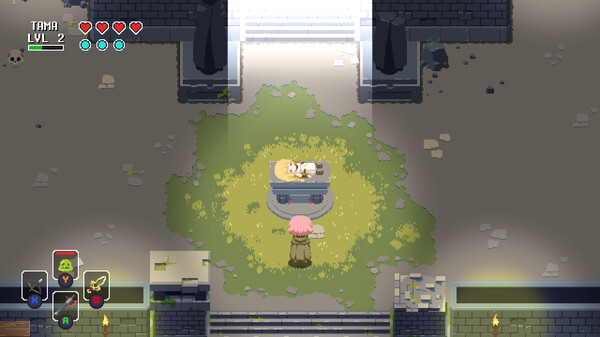
Beginning of the story...
What do you find most challenging about being an indie game developer?
Definitely what 99% of indie developers will tell you: finding funding for your games. Especially when the team grows past a couple people, having consistent funding to pay everyone is a headache.
What are your plans for the future?
We are going to release Whispike Survivors very soon, and we will keep working on Sword of the Necromancer's sequel.
We'd also like to make a remake of the first game in 3D and maybe add some new dialogues to expand on Tama and Koko's travels.

